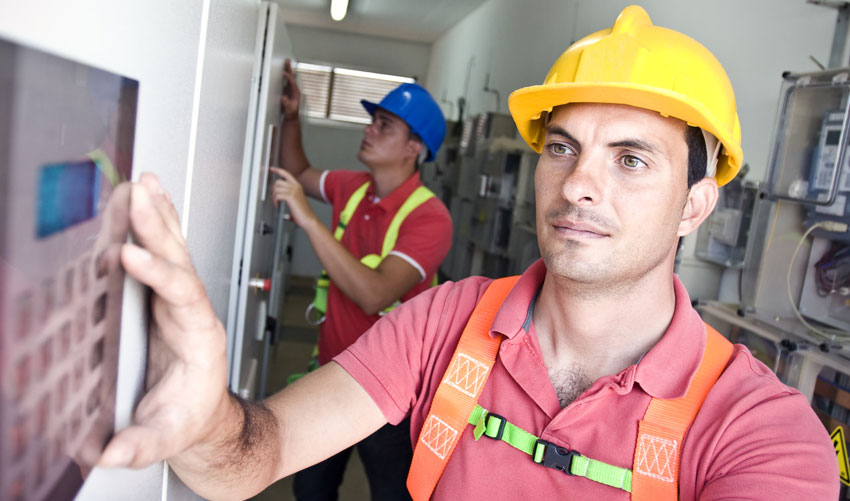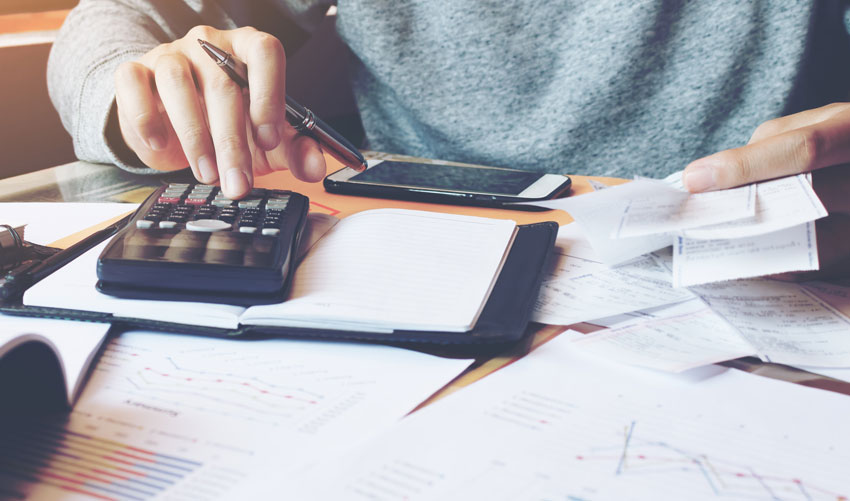Solar panels have plummeted in price, down 60% since 2008. That is a big jump, especially considering that solar energy has only risen in popularity and availability. Sure, there is a bigger supply and demand for solar panels but the solar panel industry currently has more than 250,000 workers.
However, when it comes to deciding how much solar panels cost, the consideration is more than simply paying for a service to be attached to your home, as you would do with traditional electric and gas hookups. Instead, solar panels are an investment in the future.
This is a mini-guide to explain the history of solar panel cost, the current costs associated with solar panels, and the expectation you should have of your solar panels. All of these factors play a role in the cost and ultimately the decision-making process of whether solar panels are right for you and your home.
History of the Solar Panel Price
Nearly every new invention, gadget, technology, or even concept is most expensive when it first hits the market. However, before the 2008 downward spiral of the solar panel price tag, there were plenty of hopeful scientists wishing for the best when it came to the eventual affordability of this technology.
 Solar panels, although they may be new to the masses, are not as new a concept as many people believe. In fact, there is an argument to be made that humans were harnessing the power of solar energy in the 7th century B.C. It is historically accepted that humans used the sun to light fires by using magnifying glass material. Common practices were also used by Chinese cultures and the Romans, mostly for ceremonial purposes.
Solar panels, although they may be new to the masses, are not as new a concept as many people believe. In fact, there is an argument to be made that humans were harnessing the power of solar energy in the 7th century B.C. It is historically accepted that humans used the sun to light fires by using magnifying glass material. Common practices were also used by Chinese cultures and the Romans, mostly for ceremonial purposes.
Of course, these civilizations likely did not understand what they were doing in the way that we understand solar energy today. Yet, that doesn’t mean that they didn’t use it.
When it comes to the conscious creation of solar panels, though, it is generally regarded as a genuinely collaborative effort that started in the late 1800s. However, the crude solar panel that came from this collective research into photoconductive materials was made from selenium instead of silicon like they are today.
Yet, the rating of efficiency, which was what would make solar panels truly valuable to the masses wouldn’t start until 1960 when Hoffman Electric created a photovoltaic (PV) cell with 14% efficiency. The next breakthrough wouldn’t come until 1992 when the University of South Florida created a 15.89% efficient thin-film cell.
After that, there would be another twenty-year lull before Solar Frontier created a solar panel with 17.8% efficiency. Once this happened in 2012, the next few years offered steadily increasing efficiency, until, in 2020, National Renewable Energy Laboratory (NREL) was able to break 47.1% efficiency.
Throughout this race for efficiency, the price of solar panels has decreased significantly. About 10 years ago, when efficiency was nothing like it is now, the cost of a solar panel installation was $8.50 per watt. Now, the cost of solar panel installation is between $2.67 and $3.43 per watt.
Plus, you are getting far better efficiency for your money.
Current Cost of Solar Panels
The infrastructure of the solar panel is what is going to be your biggest investment. In addition to that, there is the now drastically reduced price of the energy itself. Nevertheless, when you are looking into solar panels, you are going to be factoring in a lot of different aspects.
Ultimately, solar panels for an average home end up being between $12,000 and $15,000 to install. This is based on what the average home typically needs, which is between four and five kilowatts of power. The number of kilowatts, plus other solar-energy friendly considerations is what makes the price fluctuate. Here are some of the different factors that go into this basic figure:
Labor/Laborer
Panels/Inverter
Permit/Inspection
Structural BOS (Balance of Solar)
Electrical BOS
Sales Tax
Electrician
Remember, every project is different and every state has its own set of rules and laws regarding solar, labor, permits, and sales tax. Therefore, it is important for you to research your specific state regulations.
This graph by Modernize shows the difference in cost of a California homeowner before they had solar and then after they had solar, along with a 15-year loan for solar panel installations. During the summer months, when electricity is highest for many Americans, this graph shows a roughly $150 savings per month, even with the financing fee tacked on.
If you want a more personalized price range, visit the EnergySage Marketplace. This resource will provide comparing quotes to help you pick the best solar company for your situation.

Incentives for the Installing Solar Panels
Yes, installing solar panels is a financial investment. There is no way around that. Although knowing that it is an investment, it is also a positive, sustainable step for the health, wellbeing, and longevity of the earth, most US states offer incentives for switching to solar panels. Plus, the federal government offers incentives for the installation of solar panels.
The Federal ITC (Investment Tax Credit) is currently offering 26% of installation costs for systems placed in service by December. 31, 2020. The credit will cut down to 22% in 2021 before expiring completely on December 31, 2021. Therefore, it is important to make your decision now before this incentive is taken off the table.
Additionally, many states throughout the US are offering even more tax credits and/or cash rebates of up to ten to twenty percent.
If you are looking for even more opportunities to save and get some real return on your investment, there are also Solar Renewable Energy Certificates (SRECs) and Performance-Based Incentives (PBIs).
The first incentive mentioned is a little odd because it isn’t usually optional, but you do get paid for it. Some states require anyone with solar panels to register for Solar Renewable Energy Certificates (SRECs). This initiative offers one SREC for every 1000 kilowatt-hours (kWhs) produced by your solar panel system. Basically, the utility company is buying energy from you. Why? The Renewable Portfolio Standard (RPS) mandates that utilities produce a certain amount of renewable energy sources. Currently, thirty states have implemented RPS, while eight other states have short-term goals that include implementing it.
Ultimately, this is a great way to get some extra cash, as it isn’t siphoning energy from your home that you will need. Likely, it is just taking the extra that is useless to you anyway. Therefore, this is a good trade, especially if you are worried about the initial solar panel cost.
The second option, Performance Based Initiatives (PBIs) are not mandatory. Rather they are run by system installers and are paid per kilowatt-hour. Therefore, this incentive offers a fair amount of extra income; and all they are looking for is information. The information is basically just the rate of energy production being achieved by the system. Solar panel installation companies use this information to ensure their systems are being installed properly and they are performing as effectively as possible.
What Affects the Installation of Solar Panels?
Since solar panels are heavily contingent on the amount of sun the panel receives, there are a few situations that can greatly affect the installation and continued efficiency of your solar panels.
- Location: Since solar panels rely on the sun the location of your solar panels needs to have a lot of sunlight for the majority of the day.
- Temperature: If it is too hot, over time, this will break the solar panels down, making them less effective.
- Debris: Low hanging tree branches or debris that covers solar panels for any length of time diminishes the effectiveness of your solar panels.
Financing Solar Panels
While there are different solar panels and most states have a host of companies to choose from, the option to finance solar panels is usually a major deciding factor in your personalized final cost.
Of course, it would be nice to pay for your solar panel installation out of pocket; which would give you the lifetime of the solar panels to recoup your investment and enjoy the benefits of lower monthly bills. Yet, in this financial climate, even with the cost of solar panels steadily declining, it is not feasible for many Americans to buy solar panels outright.
Therefore, you have a couple of financing options:
PACE (Property Assessed Clean Energy) Financing: This type of financing is only presently available in California, Florida, and Missouri but PACE claims that as of 2019, over 200,000 homeowners have made $5 billion in energy efficiency and other improvements to their homes through this financing method.
Loan: Depending on the state you live in, there are many different “solar loan” options throughout various lending agencies. Some people even have the option to refinance their home, while adding the solar power bill to the refinanced mortgage.
Solar Power Purchase Agreement: This is an interesting option, as it offers little to no cost to you but it is not a straight lease. Instead, it is a purchase agreement that typically ranges from 10 to 25 years. With a PPA, you (the customer) will receive the benefit of solar, while the developer receives the tax incentives and other opportunities available for renewable energy.

What are the Expectations of Solar Panels?
Solar panels are extremely durable and if they are well maintained, they will maintain at least 80% of their efficiency for 25-30 years. It is accepted throughout the solar energy community that solar panels lose 0.5% to 1% of their efficiency every year. While this might sound like a dealbreaker, you likely will not even notice the difference in efficiency from year to year.
Plus, just because the solar panels break down does not mean that they are useless. In fact, there are some experts that believe solar panels can last, effectively for longer than 30 years. The reason even the experts are not sure of exactly how long solar panels will last is that solar panel technology as we know it is still new. There are not many 25-30-year-old solar panels out there and even those that are available are not nearly as effective as the solar panels that are being installed today.
In summation, the cost of solar panels is hard to pin down, due to the multiple factors, both having to do with the process itself and your personal situation. The good news is that if you are considering switching to solar panels, with all the tax credits and possible cash rebates, now is the time to act. Solar panels and energy are only going to grow but getting in on it while it is still new could offer you a plethora of benefits. Not to mention, you are helping the planet’s sustainability, which really should be a good enough reason to consider solar panels by itself.




